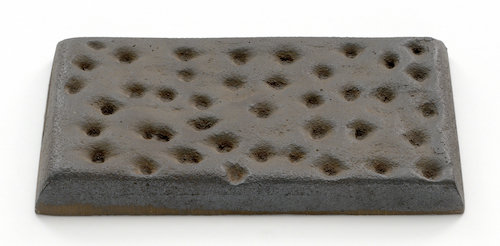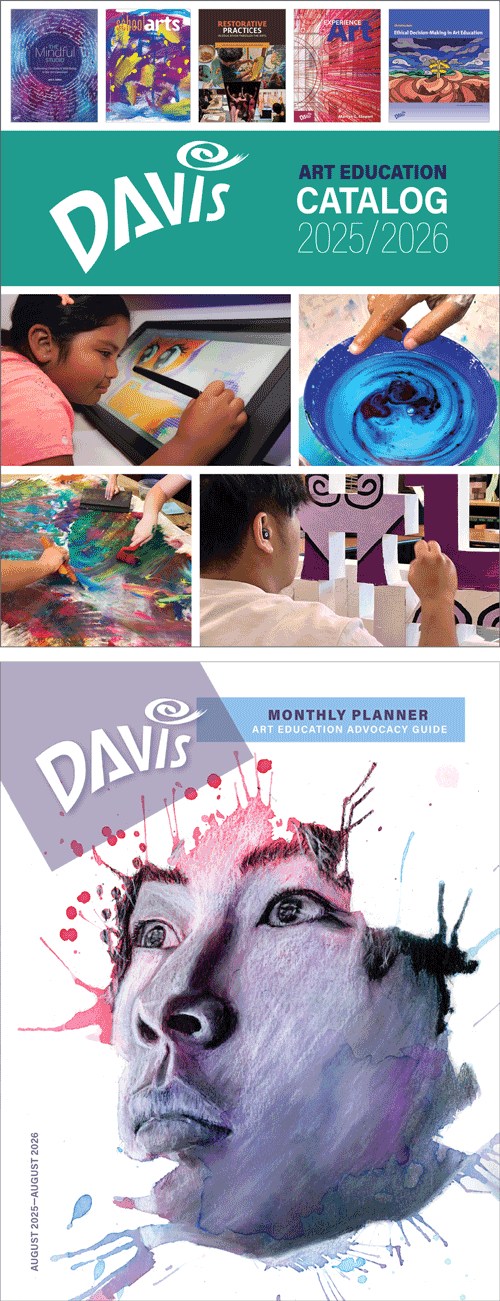National Food Day: Claes Oldenburg
One artist who undoubtedly symbolizes the Pop Art movement’s glorification of American culture by far the most in his subjects of everyday foods was Claes Oldenburg. His first installation/performance, The Store (1961) in New York set the tone for his parodies of food in many media.
National Food Day, 24 October: art by Claes Oldenburg (1929-2022, US born Sweden)
 |
| Claes Oldenburg, Knäckebröd, 1966, cast iron, 1.7 x 16.5 x 9.5 cm The Museum of Modern Art, New York, © 2025 Claes Oldenburg or Estate of Artist (MOMA-S0142) |
Knäckebröd is Oldenburg's brilliant transformation of the Swedish breakfast flatbread via industrial material. Oldenburg once admitted that many of his ideas for objects came when he was either eating, or saw foods displayed in a store window. It is his clever, somewhat irreverent way of turning American commodity-obsession and consumerism on its head. Much like he did with his painted plaster food items for sale in The Store, Oldenburg has transformed a common food item into a permanent, iconic sculpture. He produced 250 copies of this particularly witty piece.
Background
Surrealism and Dada of the first half of the 1900s influenced Pop Art, which developed in the late 1950s as a reaction to the dominance of Abstract Expressionism in American art. Like the two earlier movements, much of Pop Art relied on everyday found objects, the insistence on chance as an element of creation, and the redefinition of what was valid fine art subject matter. Pop artists turned to objects and events of the everyday world in the United States, the most materialistic and consumer-oriented society in the world.
Claes Oldenburg was born in Stockholm, but his father, a Swedish diplomat, moved the family to the United States when he was a child. Moving first to New York, then Chicago, Oldenburg attended Yale University, and then studied art at the School of the Art Institute of Chicago. While attending the Art Institute, he had his first public show of some of his satirical drawings.
After graduating, Oldenburg moved to New York. He immediately became involved in the germinal Pop Art movement, befriending performance artist Allan Kaprow (1927-2006). He also associated with Pop Art painter Jim Dine (born 1930). Oldenburg’s first show in New York in the mid-1950s was a collection of found objects, and sculptures made of found pieces of wood, paper and string.
Oldenburg had major impact on the Pop Art movement in 1961 when he opened The Store on the Lower East Side of New York (107 East 2nd Street). The Store was an actual shop where the sculptures inside were for sale. The sculptures consisted of often crudely painted plaster depictions of everyday objects seen in store windows. Some of these objects, made by Oldenburg’s wife Coosje van Bruggen (1942-2009, Netherlands/US), became the model for his later larger-scale pieces.
Oldenburg began making designs for monument-sized versions of his everyday object sculptures in 1967. In the true spirit of Pop Art, these designs challenged the traditional notion of a public sculpture commemorating a person or event. These studies included such unusual objects as fire hydrants, drainpipes, fallen hats and toilet bowl floats. He also did gargantuan parodies of recognizable commercial entities such as Mickey Mouse.

Comments